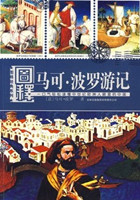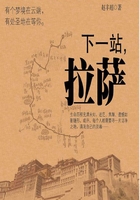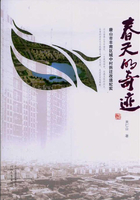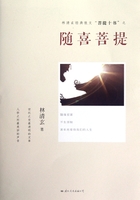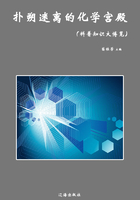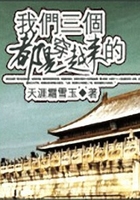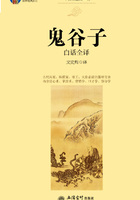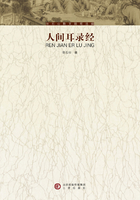In ancient China, emperors, empresses, and princesses lived in imperial palaces. Undoubtedly the palaces rank as the highest class of building according to the ancient social system. The same class goes to the Majestic Buddha Hall (大雄宝殿) in a Buddhist monastery and the Three Trinity Hall (三清殿) in a Daoist temple. These buildings appear typically magnificent because they have yellow glazed tiles, multi-layer eaves, the wudian roof, decorative paintings, painted dragons, phoenix patterns, and giant red gates. The residence owned by government officials and rich businessmen is called the Large-type Housing Building (大式). These buildings have no glazed tiles, and brackets on top of the columns reflect the social system. The third grade residence is called the Small-type Housing Building (小式) used frequently by common people.
The raised base of the ancient architecture also reflects the social system of the feudal society. The ordinary base is simple and flat to support the small or large-type housing buildings. Another kind of the raised base is called the Xumi-Seat-Patterned Base (须弥座) which originally came from the pattern of the bottom base for a statue of Buddha. This Buddhist pattern came into the traditional Chinese architecture after Buddhism entered China. This structure supports important halls in the imperial palace complex as well as buildings in a monastery or temple. The purpose is to show the resident’s noble status and rank. In addition, this base has white marble railings. The third kind of raised base is the superfine base that consists of multi-stone-floors; each floor is the Xumi-Seat-Patterned Base circled by jade stone railings. The multi-floor base is only used to support key halls in the imperial palace complex and some key buildings in a monastery or a temple like the Hall of Supreme Harmony (太和殿) in the Forbidden City and the Dacheng Hall in the Qufu Confucian Temple (曲阜孔庙的大成殿). According to The Canon Collection of the Qing Dynasty (《大清会典》), the raised base is limited to
0.67 meters in height for the residence owned by high officials of the third rank and above, and 0.33 meters in height is for the residence owned by officials of the fourth rank and below.
A jian (间) or bay is the area within 4 pillars; one jian is approximately 15 square meters. According to the ancient social estate system, a main hall in the imperial palace usually is a 9-jian hall. During the Qing Dynasty, the Hall of Supreme Harmony in the Forbidden City was expanded from 9 jian to 11 jian in dimension to show imperial power. Under the Ming Dynasty, the front, middle and rear halls owned by a top ranking duke were permitted to extend to 7 jian, and his front gate was limited to 3-jian in space. Officials of the first to fifth ranks could have 7-jian major and minor halls. Officials of the sixth and seventh ranks had 3-jian major and minor halls. Ordinary citizens were not permitted to have rooms of more than 3 jian in size although they were not limited to any specific number of rooms they could build. The Qing period saw many changes in these rules, but the system laid down by the Ming remained basically intact.
Notes:1)undoubtedly无疑地;2)majestic尊严的;3)multi-layer多层;4)glazed tile琉璃瓦;5)railing栏杆;6)approximately大约地;7)intact完整无缺的
12.什么是亭台楼榭?
Could you tell me something about a tower and a pavilion?
An ancient tower or pavilion is mainly built with wood. In some examples of their construction, not a single nail is used. Sets of brackets link up the joints of the wooden structures. Wooden teeth bite into points where wooden pieces or stuff meet.
In ancient times, a tower (楼) functioned as a storage house for books, scriptures, and portraits of famous people. A tower can beautify a garden or a scenic spot, offering visitors a space where they are able to look far into the distance. Famous towers include Yueyang Tower (岳阳楼) in Hunan Province and the Yellow Crane Tower (黄鹤楼) in Hubei Province.
A pavilion (亭) usually has a roof but no walls. Most pavilions have gently upturned eaves, splendid glazed tiles, and bright red pavilion posts. Green trees, grass, and water often encircle the pavilion, forming a beautiful landscape. The Chinese often say that a pavilion represents humankind’s place in the universe. During the Qin and Han Dynasties, a pavilion was set up every 5 kilometers for convenience of people who walking by and might stop in for a rest or lodging. The pavilion functioned as a sentry box in border districts. Later on, the pavilion turned into a small-scale building in which a visitor could have a rest or overlook the scenery all around. In the Tang Dynasty, it was common to build pavilions in scenic places and gardens. The design of pavilions varies. The most common design is the square-shaped pavilion. A common feature of Chinese gardens is the waterside pavilion (台榭) which is half built on land and half raised on stilts above a body of water to offer a view from all sides. Through a combination of natural and artificial elements, designers seek balance and harmony between man and nature in their design.
Notes:1)storage贮存;2)humankind人类;3)stilt支撑物

